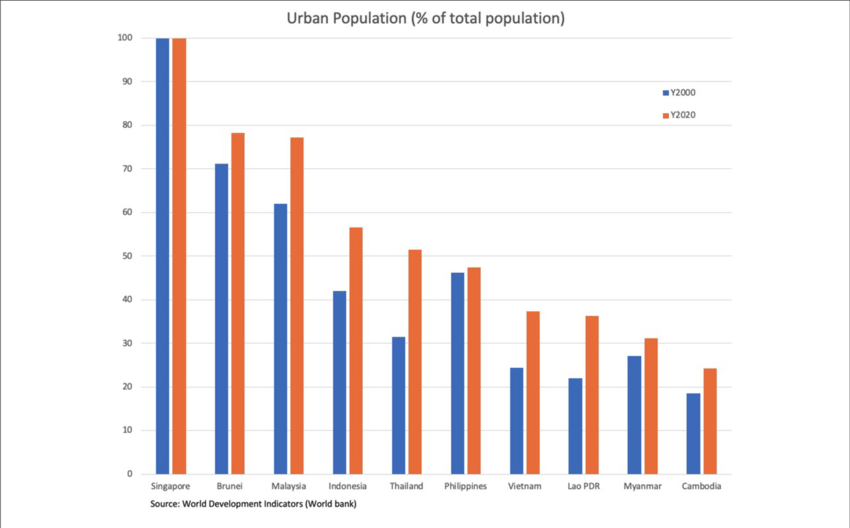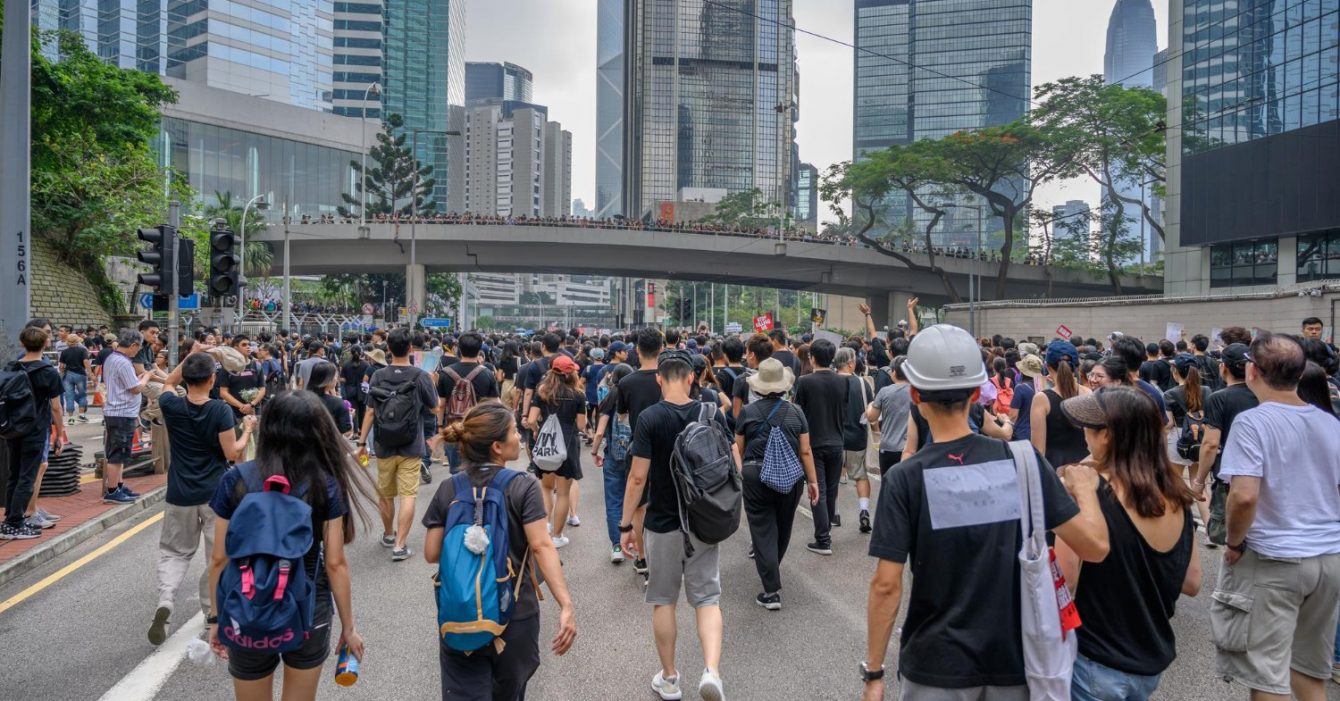Urbanization in Southeast Asia has reshaped the region’s social, economic, and physical landscapes. As of 2023, around 50% of the ASEAN population lives in urban areas, with substantial variations across countries. For instance, Singapore boasts a 100% urbanization rate, while Cambodia lags behind at approximately 25.57%. These disparities illustrate the complex nature of urban growth and its implications. Let’s break down the aspects of Urbanization Trends in Southeast Asia together!
Urbanization Trends in Southeast Asia: A Surge in Urban Growth

Southeast Asia is experiencing some of the fastest urban growth globally. Cities like Jakarta and Manila are rapidly expanding, with urban populations expected to rise significantly by 2030. By then, over 55% of Asia’s population will live in urban areas. This transformation offers opportunities for economic growth but also poses serious challenges, particularly in housing and infrastructure.
Housing Demand and Urbanization Pressures
The next Urbanization Trends in Southeast Asia is the growing urban population that creates a substantial housing demand. By 2030, Southeast Asia will require an additional 50 million housing units. This demand stems from urban migration, with people seeking better economic prospects in cities. However, this rapid growth often leads to overcrowding and inadequate living conditions. Many cities are struggling to keep pace with the need for affordable, sustainable housing, forcing millions into informal settlements or slums.
Urbanization Trends in Southeast Asia: Infrastructure Under Strain
Urbanization has placed immense pressure on existing infrastructure. Traffic congestion, insufficient public transportation, and inadequate utilities have become common issues in many cities. Addressing these problems requires massive investments. The Asian Development Bank estimates that Asia will need $26 trillion for infrastructure projects by 2030, with a significant portion dedicated to Southeast Asia. These investments are essential to support transportation, water supply, and energy systems in rapidly urbanizing regions.
Economic Impacts and Construction Growth
Urbanization Trends in Southeast Asia have also fueled economic shifts. The construction sector in Southeast Asia is thriving, with a compound annual growth rate (CAGR) of 7.5% projected between 2022 and 2027. As urban areas expand, the demand for new housing, roads, and facilities continues to grow. This shift has led to increased employment opportunities in construction and related industries, moving workers away from agriculture and into urban-centric jobs.
Challenges in Urban Planning
Despite these developments, urban planning remains a challenge. Rapid urbanization often outpaces planning efforts, resulting in poorly managed growth. Slums remain a reality for many, with over 827 million people in Asia living in such conditions as of 2010. Without proactive policies, these numbers could rise, leading to further strain on resources.
Opportunities in Urbanization Trends in Southeast Asia
Despite the challenges, Urbanization Trends in Southeast Asia also present opportunities. Governments and private sectors can collaborate to create smarter cities by integrating technology and sustainable practices. Investments in renewable energy, green buildings, and efficient transport systems could help mitigate the adverse effects of rapid urban growth. By prioritizing affordable housing and equitable urban planning, Southeast Asia can manage its urban expansion responsibly.
Urbanization trends in Southeast Asia highlight the region’s dynamic growth and its associated challenges. With 50% of the population already urbanized and rapid growth expected by 2030, the need for housing and infrastructure is more pressing than ever. By addressing these issues proactively, Southeast Asia has the potential to turn its urbanization challenges into opportunities for sustainable and inclusive growth.

